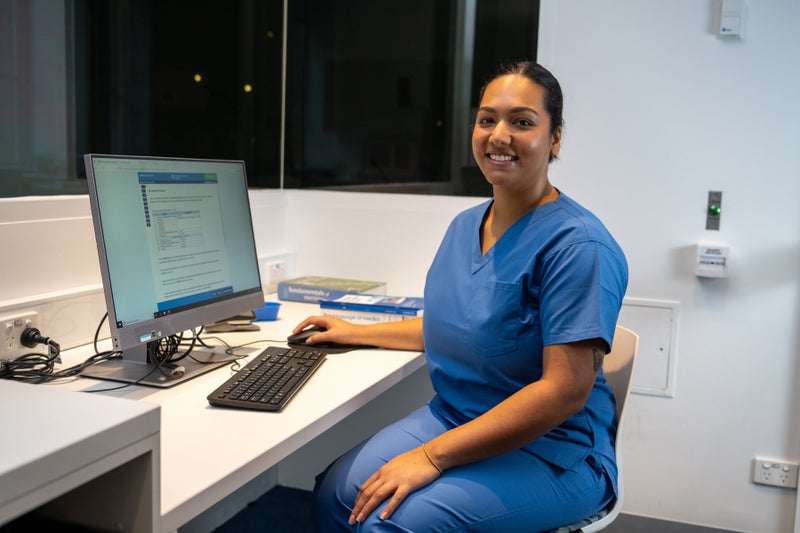
The OET Test is more than just an English-language proficiency exam for 12 healthcare professions—it’s a gateway to a healthcare career in English-speaking countries. The importance of this test goes beyond assessing candidates' language skills; it plays a crucial role in ensuring that they are prepared to communicate effectively in diverse, real-world healthcare settings. But how does OET maintain this level of authenticity and inclusivity in its testing materials? This article explores the meticulous considerations that OET undertakes to ensure its language use is both appropriate and reflective of the global healthcare environment.
Precision in language: reflecting the real world
One of the most unique aspects of OET is its commitment to using language that reflects the norms in healthcare workplaces. For instance, there’s a clear distinction in the test between lay terms and more technical medical language, especially in Listening and Speaking sections. This approach ensures that candidates are tested on their ability to understand and use language as it is genuinely spoken and understood by healthcare professionals and patients in the healthcare industry.
This attention to detail can help candidates navigate the complexities of actual healthcare settings once they start working. In one section of the Listening sub-test, candidates will hear healthcare professionals talking with each other, which means there tends to be more technical medical vocabulary used. In contrast, in the Speaking sub-test, candidates role-play with a patient or relative, which encourages them to translate technical language into lay, and to communicate clearly so the healthcare objectives of the conversation are understood by the recipient.
Balancing global perspectives
The OET Test is administered globally, with candidates coming from diverse linguistic and cultural backgrounds. To maintain fairness and relevance, OET carefully balances the use of language from different English-speaking regions, primarily the UK, Australia, and the US, which are the main workforce destinations OET candidates intend to join. This is not a simple task, given that each of these regions has its own set of medical terminologies, parochialisms and idiomatic expressions.
An example of this is the careful selection of expressions like “surgery,” which in the UK can refer to a doctor's office, while in the US, it strictly means an operation. OET avoids these potential pitfalls by choosing terms that are universally understood within the medical community.
Additionally, the test development team actively avoids expressions or idioms that might confuse candidates from other parts of the world. For example, avoiding ambiguous terms such as "carer", which can be used to refer to various roles in different countries and contexts including a family member, a nurse, a doctor even. This ensures that all candidates, regardless of their English variant, understand the material without ambiguity.
Inclusive language: beyond just words
Inclusivity is at the heart of OET's language policies. The test developers are deeply aware of the impact that language can have on candidates from different cultural backgrounds. OET makes a concerted effort to avoid language that might be considered exclusive or inappropriate. For example, terminology that has gone out of favour in healthcare workplaces, including referring to patients by their conditions or using terms like "complaints" are being phased out in favour of more neutral and patient-centred language, such as "person with diabetes" instead of "diabetic".
In addition, OET ensures that its materials are free from bias and that they respect cultural sensitivities. This includes covering topics that might be controversial or distressing in certain regions, such as alcohol addiction or end-of-life care, from a purely medical perspective and still only if the topic is essential to the test’s objectives. Even in these cases, the language used is carefully chosen to be as neutral and respectful as possible. For instance, the test might avoid using the term “elderly” in favour of “older people,” aligning with more modern and respectful terminology. Incorporating a wide range of topics, including sensitive ones, ensures that preparing for the test allows candidates to be exposed to the kind of language and issues they will be dealing with in their new workplace, increasing their confidence that they are appropriately equipped to communicate.
Another significant way OET fosters inclusivity is by incorporating a range of accents and names that reflect the multicultural societies in which candidates will eventually work. OET ensures that its listening materials include a variety of voices, preparing candidates for the diverse environments they will encounter in their careers. This is done with careful consideration to ensure that the accents remain intelligible to all candidates, thus balancing authenticity with accessibility.
Continuous evolution: keeping up with language changes
Language is not static, and neither is OET’s approach to it. The test’s language use evolves in response to ongoing feedback from subject matter experts, teachers, and candidates themselves. For instance, the shift from using "suffers from x" to "has x" in the test materials reflects a broader move towards more neutral and precise language in healthcare communication.
OET’s commitment to keeping its language current and appropriate means that every term is carefully reviewed and updated as needed. This rigorous process ensures that the test not only remains relevant but also sets a standard for professional communication in the healthcare industry.
OET’s dedication to accurate, inclusive, and contextually appropriate language use is a testament to its role as a leader in healthcare language assessment. By reflecting the real-world challenges of the healthcare environment, balancing global linguistic differences, and continually evolving its language standards, OET ensures that it remains a fair and effective measure of a candidate’s readiness to thrive in an English-speaking healthcare setting. Whether you're a teacher preparing a candidate for the test or a mentor to overseas-trained healthcare professionals, you can trust that OET’s language policies are designed with care, precision, and deep respect for the diversity of the global medical community.